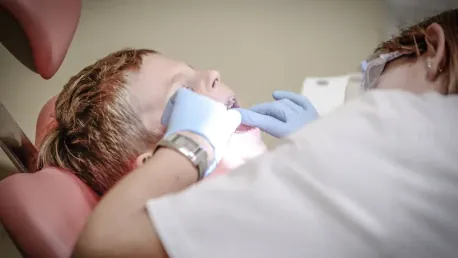Tooth decay among young children is a significant public health concern in England, affecting up to 50% of 5-year-olds and often leading to severe pain and dental extractions under general anesthetic. Researchers at the University of Manchester, in collaboration with Manchester’s Oral Health Improvement Team and backed by the Medical Research Council, have sought to address this pressing issue through targeted interventions designed to improve children’s oral health. Their studies suggest that making oral health a family priority and engaging parents more actively can produce sustained benefits for both children and their caregivers. Three notable projects—BRIC, Leapfrog, and HeRo—demonstrated that tailored interventions could significantly reduce tooth decay by fostering sustainable behavior changes.
Targeted Interventions and Their Impact
One of the critical interventions studied, the BRIC project, was co-developed with parents to promote healthier bedtime routines through a text message-based strategy. The initiative led to a 16% increase in nighttime tooth brushing and a 24% reduction in sugary snacks and drinks before bed. These changes resulted not only in better oral health outcomes for the children but also improved family moods and enhanced the overall family dynamic around bedtime. The significance of this project lies in its ability to harness technology to create positive behavior changes among families, demonstrating the potential of digital tools in health promotion.
Another powerful intervention, the Leapfrog program, targeted six primary schools located in areas with a high prevalence of oral disease. By providing children with toothbrushes and incorporating supportive activities into their daily routines, Leapfrog succeeded in significantly improving children’s brushing habits. School-based interventions offer an effective platform for reaching large groups of children and instilling good oral hygiene practices early in life. These programs need to be easy for teachers to integrate into their daily schedules and should take advantage of social dynamics, such as class-based activities, to enhance their effectiveness.
Sustainable Behavior Change and the Role of Technology
The HeRo project, another critical initiative, focused on delivering oral hygiene packs and behavior change techniques to newborns in high-need areas. This early intervention aimed to establish good oral health habits from the very beginning of a child’s life. The researchers emphasized that for interventions to be effective, they must be co-developed with the target populations, tailored to the specifics of their personal, local, and regional circumstances, and be theory-informed and evidence-based. A one-size-fits-all approach is unlikely to succeed given the varied contexts in which families live and operate. Instead, interventions should be customized to meet the distinct needs of the communities they aim to serve.
Furthermore, while technology can play a critical role in supporting behavior change, its application must be thoughtful and purposeful. The rationale for technology use should be clear, considering the specific target population and the context in which it will be applied. Integrating technology into oral health interventions can provide significant support but should not replace the need for direct, personalized engagement with families. Sustainable behavior change takes time to develop and requires adequate funding and resources to maintain progress. Therefore, the focus should be on creating long-term, sustainable interventions rather than short-term fixes.
Principles for Effective Interventions
Researchers stress that interventions must be co-developed with target populations and tailored to their specific personal, local, and regional circumstances. They should be theory-informed and evidence-based to be effective. A one-size-fits-all approach won’t work due to the diverse contexts in which families live and operate. Instead, interventions need to be customized to address the unique needs of the communities they serve.
Additionally, while technology can support behavior change crucially, its use should be thoughtful and purposeful, considering the specific target population and the context. It is important to integrate technology into oral health interventions without replacing direct, personalized engagement with families. Sustainable behavior change takes time and requires adequate funding and resources to maintain progress. Thus, the focus should be on creating long-term, sustainable interventions rather than short-term fixes.









